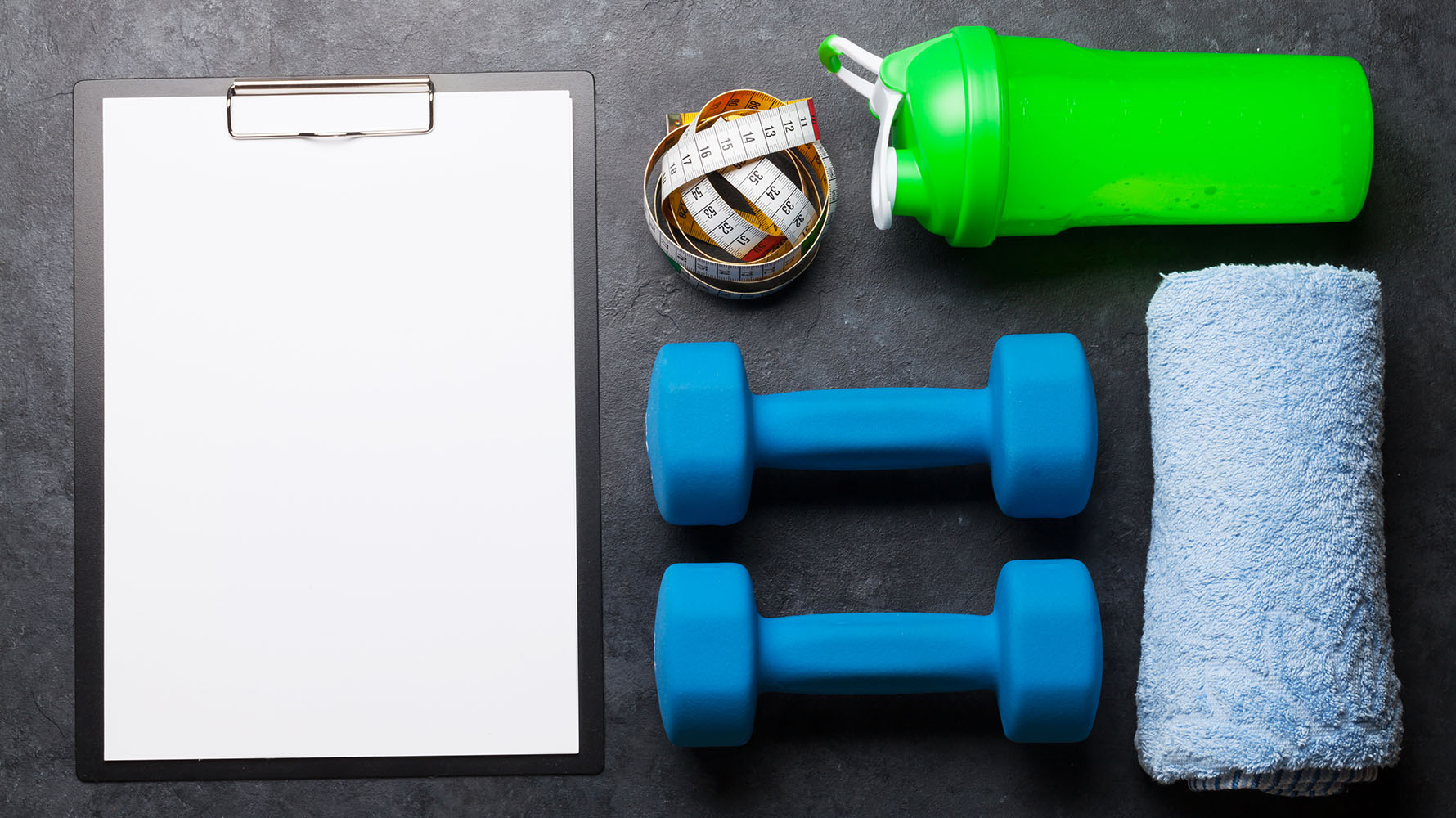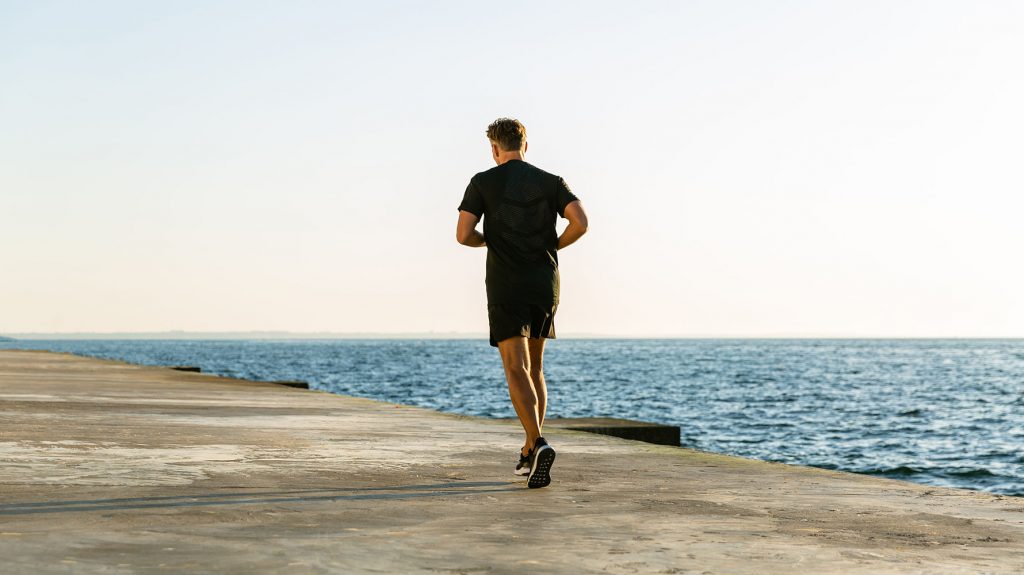Fitness is one of the most popular sports activities in the modern world. But, unlike sports, without an emphasis on bodybuilding, the goal of fitness is not to achieve records, but to lead a healthy lifestyle. In this article, we will talk about the effects that can be achieved by doing this or that type of fitness and what beginners need to know.
Life in a metropolis is now difficult to imagine without fitness. Keeping in good physical shape affects success in all areas of life, especially in the cases of work and family.
Table of Contents
What is Fitness?
The word fitness itself comes from the English adjective “fit”, which means “in good shape and healthy.” But this concept includes more than just exercise. Fitness is also a daily regimen that includes recovery after exercise, rest, and proper nutrition, that is, a completely healthy lifestyle.
A set of fitness exercises and a diet are selected individually, this depending on age, health, contraindications, goals (weight loss, weight gain, etc.), structure and features of the figure.
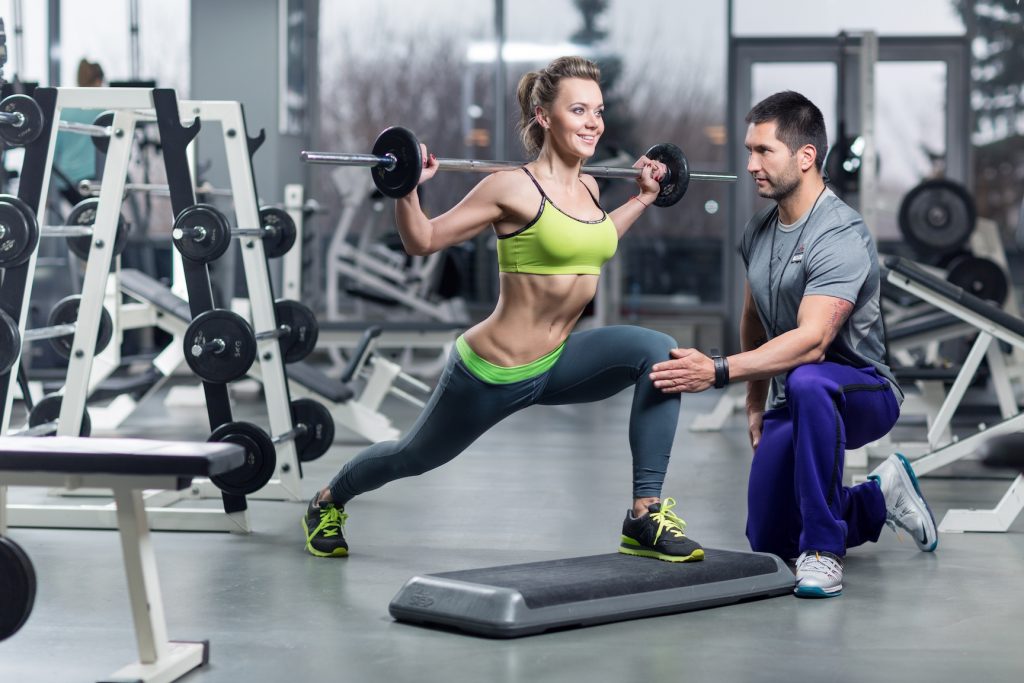
Setting Goals is an Important Step in Fitness
There are several fitness goals. The choice of the training program depends on the choice of the target.
- Slimming, slim, beautiful figure;
- Health promotion, improvement of the cardiovascular system and joints;
- Improvement of general well-being, body endurance;
- Strengthening and increasing muscle mass.
There are two main types of physical activity: aerobic and anaerobic exercise.
Aerobic exercise is not only, in fact aerobics, but also running, cycling, swimming, that is those types of physical activity when the body uses oxygen to release energy, carbohydrates and fats that are burned and provide energy to the working muscles. Aerobic exercise has an effective improving effect on health, improves the functioning of the cardiovascular system, maintains overall physical fitness, and accelerates metabolism.
Anaerobic exercise is lifting weights aimed at building muscle volume and strength.
Often, along with aerobic and anaerobic loads, stretching is combined such as gymnastics, to increase endurance through static loads and stretching of muscles, ligaments and joints.
Depending on the goals that you set for yourself, choose the types of fitness that suit you.
Types of Fitness
There are various types of fitness: aerobics, water aerobics, shaping, fitness dancing and just dancing, fitball, gyms, stretching (callanetics, Pilates, body flex and qigong breathing exercises). Yoga stands apart, as it can be either just stretching or a full-fledged aerobic or even anaerobic exercise.
The choice of direction depends on the goal that you want to achieve with fitness.
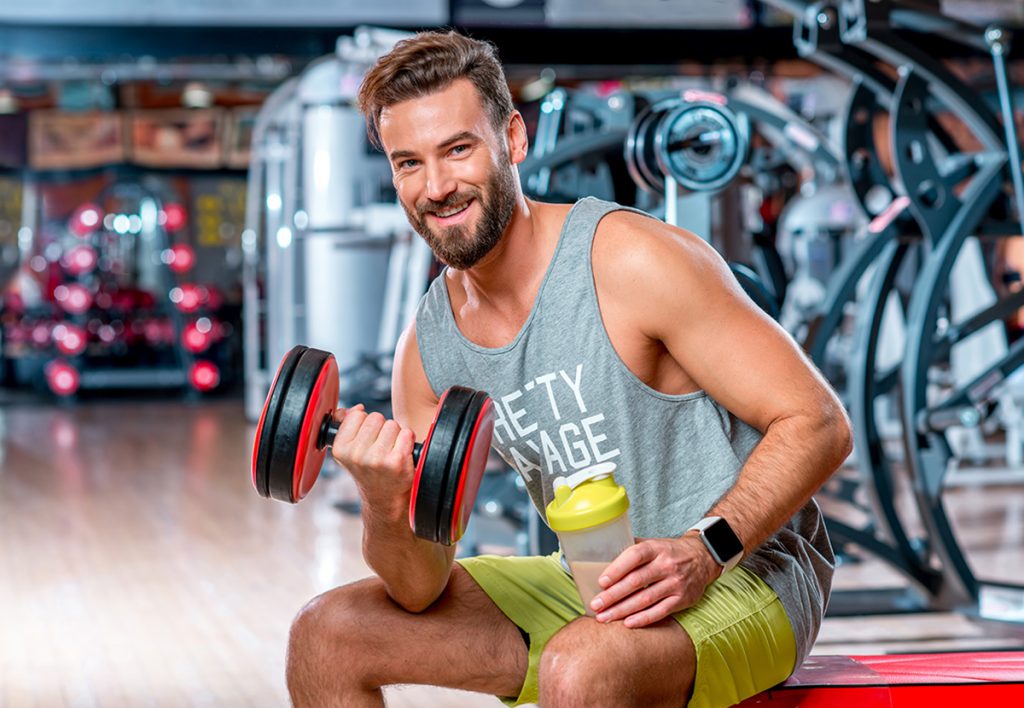
1. Classical, dance and other modifications of aerobics, this type of fitness combines exercises for developing muscles, plastics and breathing exercises. Aerobics strengthens the cardiovascular system and helps to lose weight and improve your figure. This is very effective in burning calories.
In aerobics, there are a huge number of areas. The most popular dance directions are aerobics, dance, afro, latino, funk and others.
2. Water aerobics, is a special kind of aerobics. Training takes place not in the gym, but in the pool. Additional load and calorie consumption is achieved due to water resistance.
- Stretching is muscle stretching exercises that restore flexibility to the body. This type of fitness helps to break down fat in the subcutaneous layers and get rid of cellulite and improves blood circulation.
- Pilates is training for the press, back muscles, abdomen and small pelvis, especially recommended for people with poor posture, for recovery from injuries.
- Callanetic are exercises from oriental gymnastics with elements of breathing exercises. Its basis is stretching exercises.
- Bodyflex is based on breathing exercises with simultaneous stretching and muscle tension.
3. Fitness yoga, these exercises are combined with elements of breathing practices, alternating dynamic and static movements. This type of modern fitness is effective in dealing with stress.
4. Fitball (gymnastic ball), these exercises are performed on the ball in different positions, creating a so-called muscle corset around the spine. This type of fitness strengthens the abs and improves posture. Fitball exercises can be done at home.
5. Exercises with weights (what is now often understood as the word “fitness”), the so-called classic fitness, includes using dumbbells, kettlebells, barbells, expanders, etc. As a rule, training such as this takes place in the gym. This helps strengthen muscles and build muscle. This includes bodybuilding and crossfit, powerlifting and other strength activities aimed at muscle hypertrophy.
6. Scandinavian walking, is a type of physical activity that uses a specific method of training and walking technique with the help of specially designed poles. Recently, it has been very popular all over the world.
Choosing a Fitness Program
The choice of direction and training program depends on the goal you want to achieve. And interest in specific activity plays a role, of course. The higher the interest and motivation, the better the results will be.
All types of fitness are suitable for general strengthening of the body, as well as walking (walking or sports). For weight loss and bodybuilding, all types of aerobics, cycling, running, fitball and strength training will be beneficial.
To strengthen the cardiovascular and respiratory systems, aerobics, cycling (including an exercise bike), swimming and jogging (treadmill) are good. To strengthen the respiratory system, yoga and body flex are perfect.
Strength training is essential to increase muscle mass.
In order to choose the right set of exercises and the appropriate diet, it is necessary to consult with an experienced trainer.
Fitness for Men and Women
It should be remembered that weight loss programs for men and women are significantly different. This is due to the physiological characteristics of organisms in both sexes. In addition, it is necessary to take into account the physical condition of the body and the age of the person.
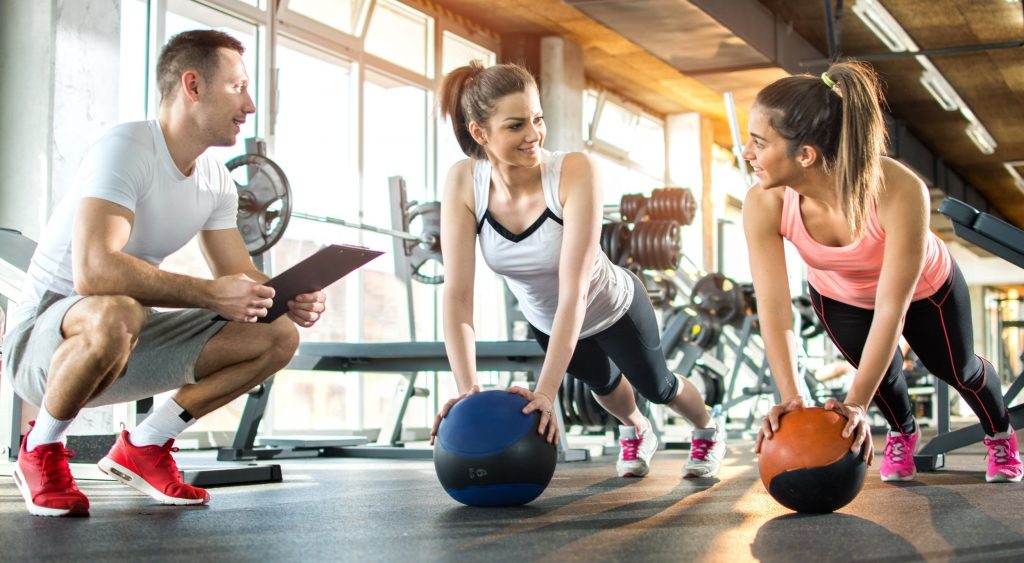
Fitness Classes for Women 18-30 Years Old
At this age, as a rule, the body copes with the stress, metabolic processes go on without interruption. A lot of calories are expended without much effort. It is at this age that muscles are strengthened, a basis for the future is created, as the body as a whole becomes stronger in the long term.
The first thing to do is to reduce your sugar and salt intake, drink plain clean water and focus on proper nutrition and muscle development. If you haven’t done strength training until you are 30, then it’s time to start, you just need to do it regularly and under the guidance of a coach, you can’t just get off the couch and go to “pump up”. It is also time to cultivate the habit of walking 15,000 steps a day , this promotes a good stable metabolism.
The best exercise option is alternating different loads. For example, half an hour of exercising every day and / or three sessions per week for an hour. It’s good to do half an hour of stretching and endurance workouts every day (like yoga), and complement that activity with an hour of jogging, cycling, swimming, and strength training.
And in addition, it is very good to walk a lot, try not to use the elevator when there is an opportunity to climb the stairs.
Fitness Classes for Women 30-40 Years of Age
At this age, the female body, not experiencing stress, spends a day 125 calories less than at a younger age, fat deposits accumulate, bones and joints age. Lethargy and rapid body fatigue is possible.
Experts advise that at this age, to do fitness four hours a week and devote an hour a week to stretching. Useful aerobics, water aerobics, swimming, exercise in the gym on simulators and with weights. The best option is to combine aerobics and exercise together in the gym.
To maintain health and a slim figure, it is necessary to train the musculoskeletal system, especially not only skeletal muscles, but also the skeleton and ligaments itself (to combat age-related diseases, such as Osteoarthritis). As stated above, the best option is a combination of aerobic exercise and exercise in the gym (anaerobic exercise).
Fitness for 40-50 Year Old Women
Starting from the age of forty, bones loosen up to 1% of their mass annually and due to hormonal disorders, fat deposits appear. To reduce the manifestation of these signs, it is necessary to regularly engage in sports activity. Experts advise doing stretching exercises for at least one hour weekly, doing aerobics or dancing for two to three hours in a fitness center or at home. Walking and cycling, swimming, Nordic walking are beneficial at any age.
Fitness Classes for Women over 50 and over
After 50 years, a woman begins to lose muscle mass, the body compensates for it with fat. Weight gain negatively affects the cardiovascular system and the condition of the joints.
At this age, two hours a week should be devoted to cardiovascular training and one hour to stretching. At this age, you need to train the mobility of large joints, develop the muscles of the back and hips, and also work with rotational movements.
Hiking, swimming, morning exercises (yoga and qigong), exercises with small weights (small dumbbells of 1-2 kg) are recommended, this helps to maintain muscle tone and keep the heart and joints healthy.
After 60 years , a gentle exercise regimen with minimal exertion is recommended . The regularity of classes is very important, it is advisable to conduct classes with a trainer, with his help, the individual load will be determined, which is most optimal for the body. Experts recommend half an hour classes five times a week. Walking, including Scandinavian, cycling, swimming, yoga and Pilates are very useful.
At this age, restrictions are imposed on exercises with a heavy load on the articular-ligamentous apparatus ; abrupt changes in the position and movement of the body, strong bends, stands on the head, hands; bending; prolonged statics, as well as group yoga, which does not take into account the individual characteristics of the state of the musculoskeletal system.
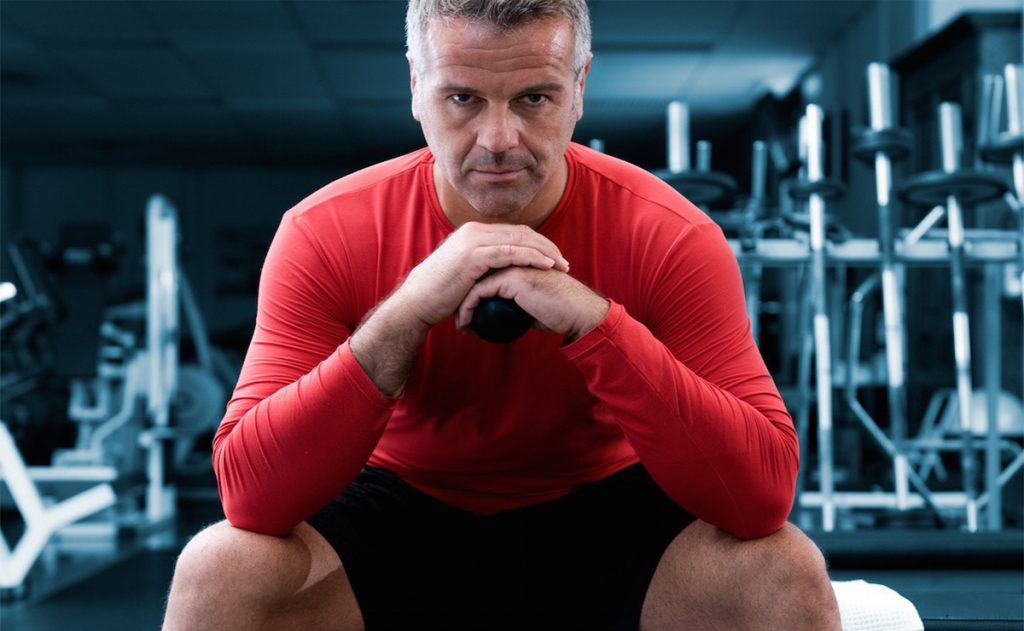
Workouts for Men
In the bodies of a man and a woman, on average, the number of fat cells is the same, however, they differ in the size and functioning of enzymes. The male body stores fat more slowly and burns it much faster. Men get fat because they don’t get enough sleep and are nervous a lot. But men lose weight to a greater extent due to the consumption of fat and not muscle tissue, unlike women.
The main rules for losing weight, acquiring and manifesting muscles for men:
- Find your own personal eating regimen. For example, fractional meals – four to five small meals throughout the day. But other options are also possible.
- Combine cardio and strength training. Triathlon is good in this business (the program includes running, swimming and cycling), race walking, playing football, plus exercises for the legs, arms, abs, chest and back with weights.
- It is not necessary to completely eliminate your favorite foods and alcohol from your diet. Two or three times a week, you can eat a cake, fried meat, drink a glass of wine or beer. But on other days, follow the regime and adhere to the principles of proper nutrition. Eat when you are hungry and avoid stress.
- Drink at least 2 liters of clean water a day.
- Sleep at least 7 hours a day.
It is important to say only that you will need to work with all of the muscles within the body, because the body trains evenly and you cannot lose weight or build up in only one place.
It is also important to understand that everyone has their own body structure. The same effort by two different people leads to different results. And muscle volume depends on the number of fibers. If you are naturally high in fiber, you will build muscle faster.
The Main Stages of Fitness Training
The main stages or periods of classes are the preparatory stage, or warm-up, designed to warm up the body; basic, main stage and recovery (hitch).
When playing sports, and fitness in particular, it is helpful to keep a workout diary.
Regardless of the degree of difficulty of the workout, it should begin with stretching the muscles, ligaments and joints. For warm-up, walking, light jogging, i.e. exercises aimed at warming up the muscles. A warm-up prepares the entire body so that it does not experience severe stress from a sudden change in heart rate. The time allotted for warm-up should be at least 10-15 minutes.
The duration of classes should be determined in accordance with the state of health, the level of preparedness of the body for physical exercises and the tasks that you set for yourself. Before choosing a fitness program for regular training, it is recommended to get tested and consult with a doctor.
Conventionally, there are 3 levels of physical fitness: high, medium and low. With a low level of physical fitness, it is recommended to start with the simplest set of exercises and train for 30-40 minutes a day or every other day. With a high and medium level of physical fitness 1-1.5 hours a day, or every other day.
If you feel that your daily workout is taking a lot of energy out of you, schedule a workout every 72 hours. This is a general rule because 72 hours is the time it takes to rest and recover from stress caused by exertion.
At the initial stage of training, it is better to train according to one program, comprehensively preparing all muscles for subsequent more intense loads. Each exercise should be performed in several approaches, the number of which is determined by the level of physical fitness. At the initial stage of training with a low level of physical fitness, it is equal to 2, with an average and high level of physical fitness, the number can be increased to 5. As soon as the muscles get used to the received load, it will need to be increased (the average time of adaptation to a regular and equal load is 10-14 days). The muscle rest period should not be too short or too long.
There should be a cool down at the end of each workout . This is the final stage of training, during which the body returns to its normal state and the muscles cool down. All exercises should be performed in a slow, calm rhythm without muscle tension. During a hitch, the body gradually relaxes, and the heart reduces the frequency of its contractions, the pulse gradually decreases to the optimal level. In the event of an abrupt termination of training, the heart will continue to pump blood at an increased rhythm for some time, which will be retained in the muscles.
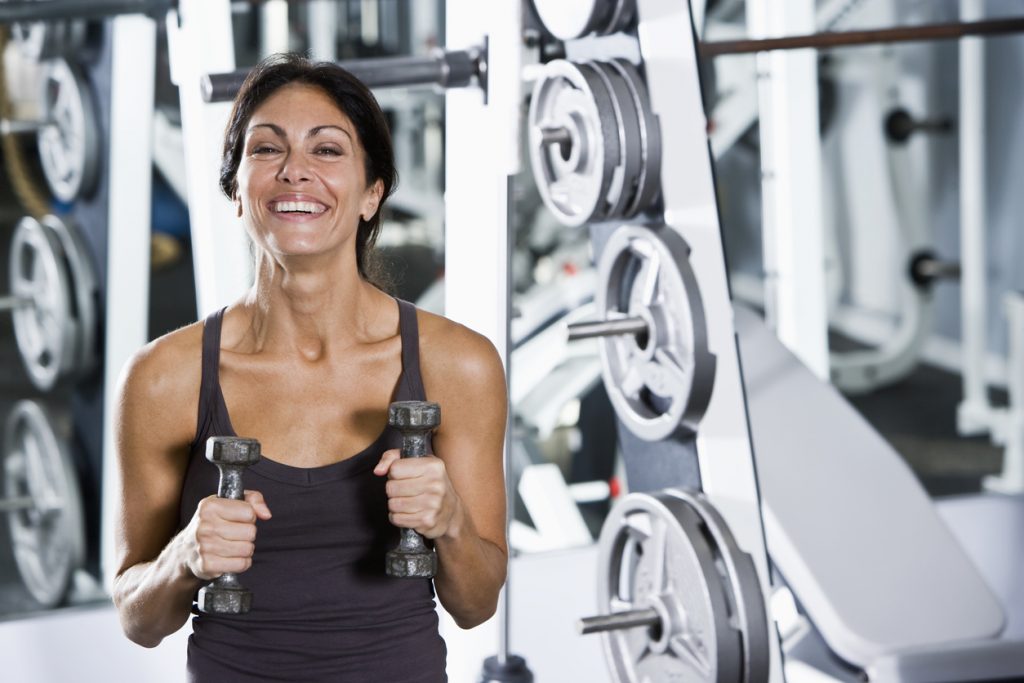
Fitness for Children
The main difference between children’s fitness and an adult is that the loads should be designed for the child’s body and a special, playful approach is required for classes . Classes are built taking into account the peculiarities of the age: from studying simple physical exercises, children move on to more complex ones, such as; dance aerobics, gymnastics, the basics of martial arts. When the child is at least six months old, you can start with him the simplest workouts for babies, massage and a specially designed set of exercises are recommended. When the baby begins to walk, the program includes exercises for mastering the skills of balance, the formation of the correct arch of the foot, which prevent the development of flat feet. You can also start swimming with good supervision and support of the child.
Classes for children 3-4 years old should last no more than thirty minutes and be entertaining. The basis is the elementary exercise. You can start classes with swimming, stretching, games aimed at developing fine motor skills.
From the age of 6 with children, it is good to do exercises that develop logic such as dance aerobics.
At the age of 8, the work can begin with sports equipment such as; a ball, a rope, a hula hoop. Various team games can be arranged for children.
Children’s Fitness Groups
Children’s fitness groups usually consist of 10 or 15 people. The age of admission depends on the group, it can start from three years.
Children’s fitness, like an adult, includes a similar set of exercises. These are three parts: preparatory which is the warm-up, main and final, followed by a recovery or cool down period.
When choosing fitness, experts recommend taking into account the temperament of the child. More sociable children love team games and competitions . For others, it will be more suitable for those types of sports activities where you can achieve something without the need to compete and compare yourself with others.
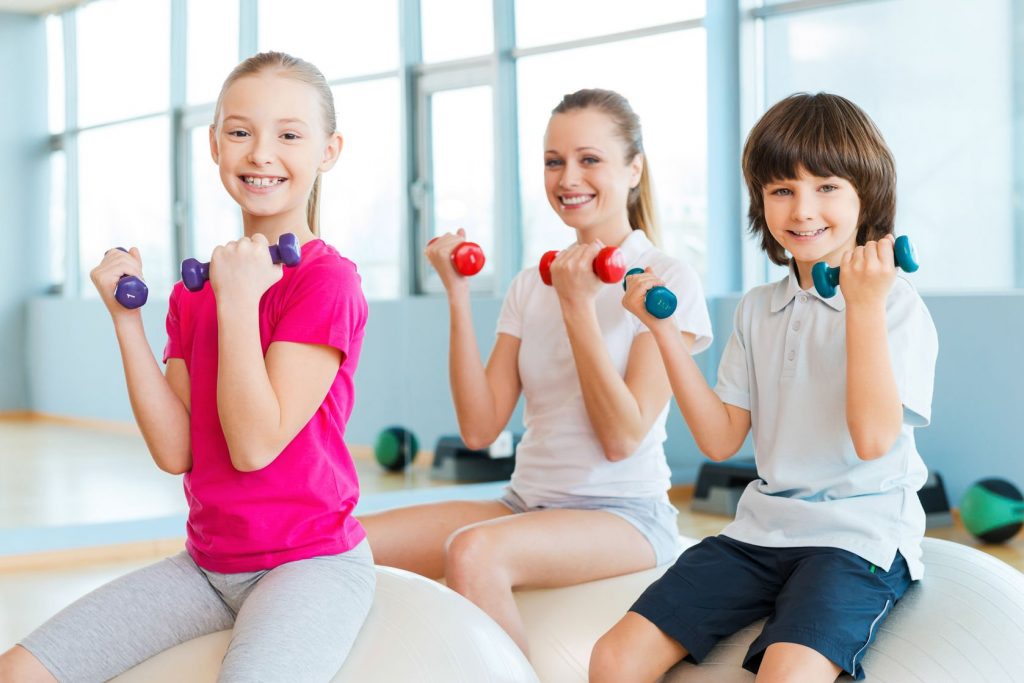
There are special types of children’s aerobics:
- Imitation of animal movements (animal aerobics),
- Logo aerobics, which are performing physical exercises with the simultaneous pronunciation of sounds and quatrains,
- Kids yoga
Taking into account age characteristics, you can do step aerobics, fitball aerobics, children’s yoga, and even strength aerobics.
Personal Trainer for the Child
One of the important points when choosing fitness for a child is the personality of the trainer, with whom the child must establish contact and understanding. If the child does not like the coach, change the sports club, even if he is their father from home. The child should study without compulsion and with pleasure. A fitness trainer, like a trainer in a section for a child, must combine the qualities of a qualified specialist in his field, have a pedagogical talent, be a good psychologist in order to find the correct individual approach for everyone.
Form and Inventory
To do the exercises correctly, you cannot do without equipment. Numerous sports and online stores offer a large selection of various fitness products, without which it will be extremely difficult to conduct a class.
These include: Special massage and gymnastic balls (fitboly), mats for fitness, a variety of fitness equipment, a variety of small equipment (rope, rotating disk sets for yoga, weights, weights, etc.). Decide on a training program, and then it will become clear what kind of equipment you need. Although, a pair of dumbbells, a jump rope, a rug and a fitball are never superfluous and they are not expensive. The inventory will make your workouts more effective and interesting.
As for the uniform, it should not hinder movement, be well ventilated and conduct moisture. In the past few years, fitness clothing has been made with materials that provide comfort during exercise.
A special approach is needed for the selection of equipment and uniforms for children and adolescents. The equipment should be reliable and suitable for a given age, and the shape should be comfortable and bright in order to further attract the child to sports.
